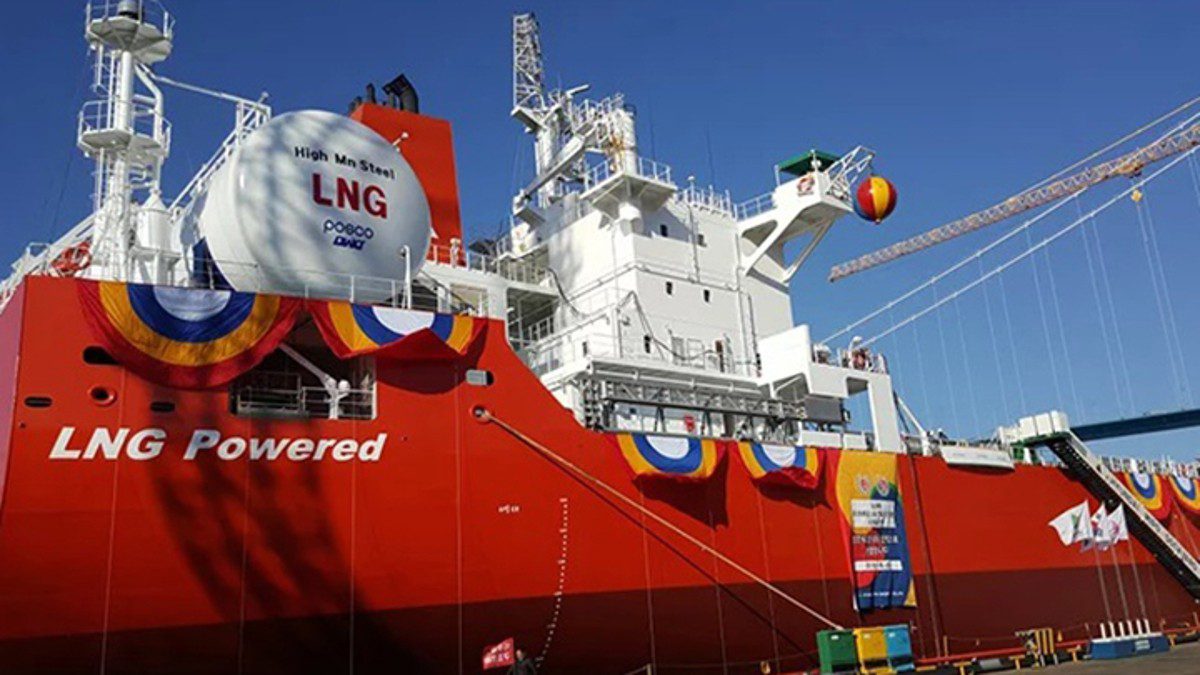For LNG carriers, the high cost of LNG equipment has always been a huge bottleneck restricting the development of related products, and the price of LNG storage tanks accounts for one-third of the entire power system
However, a combination of R&D and regulation is set to revolutionise storage and handling of cryogenic LNG on board ships, as high-manganese austenitic steel becomes a practical alternative to nickel steel and other alloys used for storage tanks and pipelines on ships that carry LNG.
This promises an immediate reduction in cost, with further cuts to come, believes China Classification Society (CCS) vice president Fan Qiang, after CCS issued its first certificates for high-manganese austenitic steel in April.
With China standing as the world’s largest shipbuilding nation, Mr Fan told LNG Shipping & Terminals the successful development of domestic high-manganese austenitic low temperature steel “will greatly alleviate industry’s dependence on imported nickel ore, provide new solutions for the industry, reduce the burden of shipowners and help the further popularisation of LNG-powered ships.”
Some shipyards in China are already exploring welding processes for this steel to be ready “when the relevant technology is mature”, he said. This will “greatly enhance” Chinese shipyards’ competitiveness in the field of high-end construction and “lay a solid foundation” for both its domestic and international markets in high-end steel and welding materials, he added.
Currently used alloys are generally very expensive because they contain a large amount of alloying elements, especially nickel, which has substantially increased in price in recent years.
Replacing nickel with lower-cost manganese brings an obvious reduction but “because high-manganese steel has not yet achieved large-scale industrial production, the price still has great room for reduction,” Mr Fan predicted.
Pioneering delivery
High-manganese austenitic steel was first used in the fuel tank of an LNG-fuelled bulk carrier, POSCO’s 50,000-dwt Green Iris, for which the steel was used in a 500-m3 C-type fuel tank. It was delivered in 2018 by South Korea’s Modern Weipu Shipbuilding, which is now part of the HHI subsidiary, Korea Shipbuilding & Offshore Engineering.
In December 2020, Hapag-Lloyd ordered six LNG-powered 23,500-TEU ultra-large container ships at Daewoo Shipbuilding & Marine Engineering (DSME), with a total value of about US$1Bn. This batch of container ships adopts a pioneering design and installs 18,000-m3 of B-type LNG fuel tanks made of high-manganese steel. Up to US$2M to US$3M per vessel can be saved due to the use of this new fuel tank material.
In June 2021, Hapag-Lloyd announced the execution of an alternative order at DSME, adding six dual-fuel ultra-large container ships, which will be delivered in 2024. Upon delivery, all 12 new ships will be deployed on the Far East-Europe route as part of the maritime alliance THE Alliance.
CCS’ certificates gave factory approval for high-manganese austenitic steel welding materials for three organisations: the 725 Research Institute of China Shipbuilding, Hegang Wuyang – part of the Hebei Iron and Steel Group – for its high-manganese steel plate, and CIMC JingmenHongtu Special Aircraft Manufacturing Co, which makes high-manganese steel gas storage tanks.
These certificates marked “the successful development of domestic high-manganese austenitic steel and putting forward practical solutions for the material innovation of domestic LNG-powered ships,” CCS said in a statement at the time.
CCS summarised its achievements, saying its partners had “overcome a series of technical bottlenecks”, which included high-manganese austenitic steel smelting and rolling process optimisation, matching welding materials, head forming, etc. It said it had prepared high-manganese low-temperature steel LNG storage tanks for the first time and had successfully completed water operation tests on thousands of kilometres of high-manganese steel LNG storage tank welds.
It had also issued product standards and application guidelines aimed at the whole production chain, “playing a demonstration and leading role in the production and application of high-manganese austenitic steel in China.”
In remarks made when the certificates were presented, Mr Fan said the project marked “the successful development of domestic high-manganese austenitic steel” and that it had produced practical and innovative solutions for domestic LNG-powered ships.
CCS believes the only way to ensure sustainable development of this technology within China’s shipbuilding industry is for steel manufacturers to “independently overcome many technical difficulties and successfully manufacture LNG ship tanks with high-manganese steel”, explained Mr Fan, echoing the class society’s statement announcing the certification, which said promoting independent application of high-manganese austenitic steel and its supporting welding materials for marine LNG tanks “will greatly enhance the competitiveness of shipbuilding enterprises in the field of high-end manufacturing”.
This, it went on, “will contribute China’s strength to the sustainable development of the world shipbuilding industry.”






